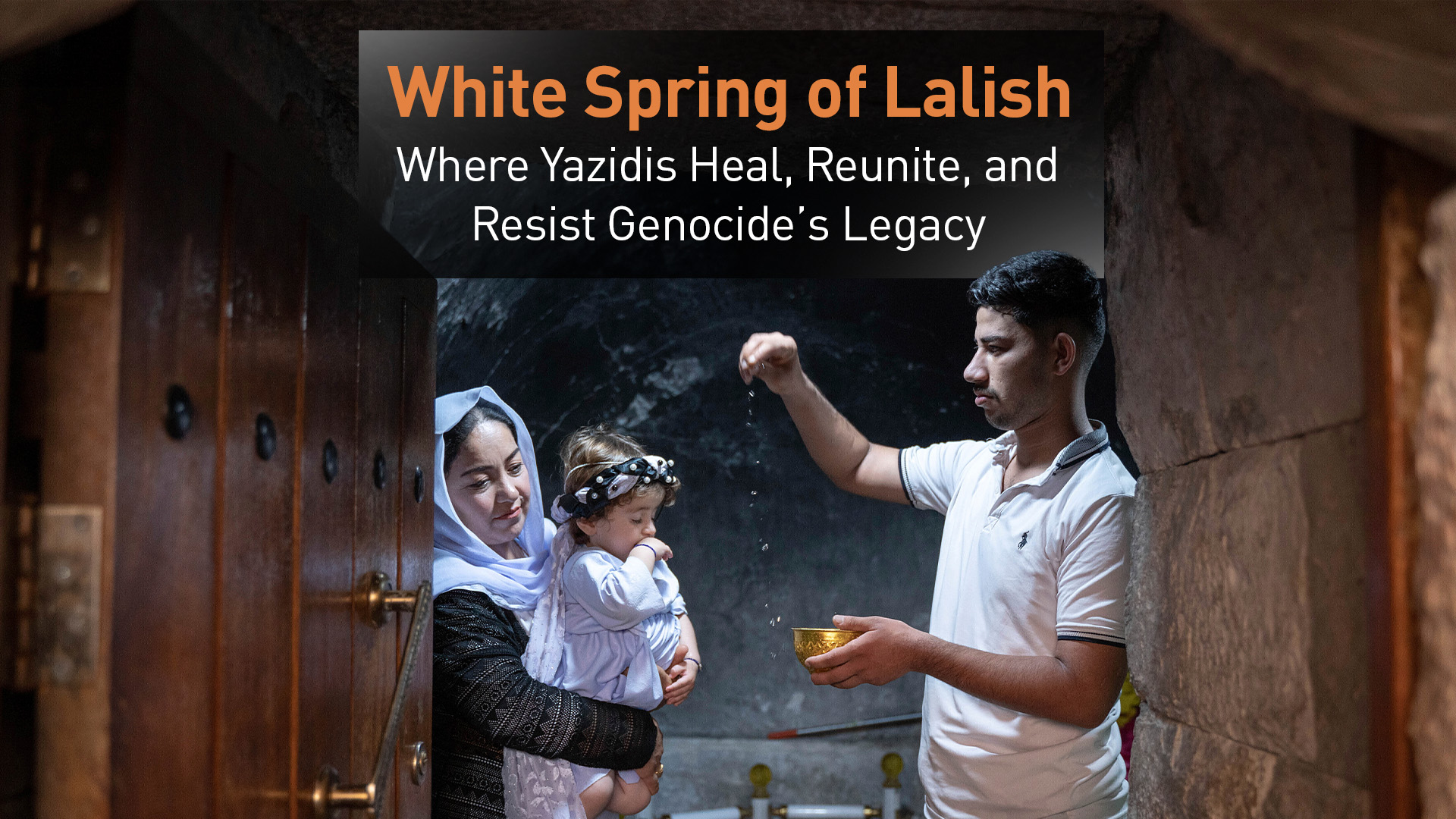'Kanî Spî' as a Symbol of Resistance: Yazidis Reintegrate Survivors 11 Years After Genocide
On the 11th anniversary of the genocide, the Yazidi community formally welcomes survivors at Lalish Temple, defying ISIS. Leaders highlight Sinjar's ongoing devastation and call on the Iraqi government to fulfill its moral and constitutional duties toward the Yazidi people.

ERBIL (Kurdistan24) – Eleven years after ISIS unleashed a genocidal campaign against the Yazidis, the community continues to defy the terrorists' hateful ideology by welcoming every survivor back with sacred rituals at its holiest shrine, even as leaders lament the ongoing devastation in Sinjar and call on the Iraqi government to address the unhealed wounds of its people.
In a powerful act of communal healing and rejection of ISIS doctrine, Yazidi survivors are being reintegrated through a formal decree established by their highest religious authorities. In 2014, just weeks after the genocide began, the Yazidi Spiritual Council, the Mir (Prince), and the Baba Sheikh decreed that every Yazidi girl and boy rescued from ISIS must be accepted and respected.
This decision is put into practice at the Lalish Temple, the holiest site for Yazidis globally. Every rescued individual is brought to the temple, baptized in the sanctified water of the Kanî Spî (White Spring), and formally returned to their families, signifying their complete and unconditional acceptance back into the community.
Riham Haji, a survivor of ISIS captivity, described the stark contrast between the terrorists' threats and the reality of her return. "When I was held by ISIS, they told me, 'Whenever you return, the Yazidis will kill you. They will not accept you back into their community,'" she said. "Now I have been rescued, and everything in my community is the opposite of what ISIS said. I am treated with great respect. I came to Lalish today, and I am very happy."
This sentiment of collective embrace is echoed throughout the community. "It is not just me, but every Yazidi—when our daughters and sons are rescued from ISIS, we bring them to Lalish and accept them at the spring, at the gateway," stated Jahi Hamid, a relative of Yazidi victims. "Because our spiritual authority, the Baba Sheikh and the Mir of the Sheikhs, has accepted them."
Pir Sardar, the custodian of the Kanî Spî in Lalish, reaffirmed the official nature of the ritual. "Any Yazidi boy or girl who is rescued, we as the Yazidi community accept them back and perform the ritual for them," he explained. "This is the decision of the Spiritual Council, the Baba Sheikh, and the Mir of the Yazidis, because they have accepted them back."
However, these profound moments of healing are set against a backdrop of immense and continuing tragedy. On Saturday, Aug. 2, 2025, marking the 11th anniversary of the genocide, Vian Dakhil, spokesperson for the Kurdistan Democratic Party (KDP) bloc in the Iraqi Parliament, underscored the devastating toll.
"Eleven years ago, ISIS terrorists attacked the Sinjar district and committed one of the most heinous crimes of the modern era," Dakhil stated. She noted that of the 6,417 Yazidis abducted, the fate of 2,827 remains unknown.
Dakhil asserted that the genocide is not over, pointing to the dire humanitarian situation. "To this day, more than 280,000 displaced Yazidis live in camps, thousands of homes remain in ruins, and dozens of mass graves have not yet been exhumed," she said. "Sinjar is still silently bleeding, without infrastructure, services, education, or necessary healthcare."
She issued a renewed and urgent plea for governmental action and full implementation of the Sinjar Agreement. "Since 2014, we have asked hundreds of times, and we ask again, that the Iraqi government assume its moral and constitutional responsibility for Sinjar and the Yazidi issue," Dakhil declared. "However, these requests remain pending due to neglect and silence."
The attack on the Yazidi Kurds by ISIS militants on Aug. 3, 2014, resulted in a catastrophic loss of life and culture. While the Kurdistan Regional Government has aided in the rescue of a large number of the 6,417 abducted citizens, thousands remain missing. The genocide also left behind 83 discovered mass graves, 68 destroyed Yazidi shrines and temples, and 2,745 children orphaned. Approximately 400,000 Yazidi Kurds were displaced, the vast majority of whom have been unable to return home.
On the anniversary, the International Organization for Migration (IOM) - Iraq Office also acknowledged the profound suffering. In a statement, the IOM said, "Eleven years have passed since the Yazidi genocide. The survivors of this crime are returning to their homes." The organization emphasized its solidarity with the Yazidi people and pledged to support them in rebuilding their lives, relationships, and ensuring a safe return to their homes.
